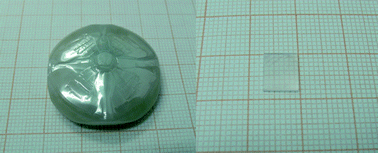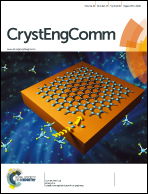Orientation dependence of electrical properties of large-sized sodium potassium niobate lead-free single crystals
Abstract
Lead-free (K0.25Na0.75)NbO3 (KNN25/75) single crystals with dimensions of Ø30 × 10 mm were successfully grown by a top seeded solution growth technique (TSSG). The X-ray diffraction pattern shows that the as-grown crystals possess an orthorhombic perovskite structure. The concentrations of K, Na, and Nb elements in the as-grown crystal were measured by X-ray fluorescence analysis. The dielectric, ferroelectric and piezoelectric properties of KNN25/75 crystals with different orientations, i.e., pseudocubic (100) and (110) ((100)pc and (110)pc), were investigated. A higher piezoelectric constant d33 ~ 145 pC N−1 and electromechanical coupling coefficient kt ~ 69% were observed along the (100)pc orientation compared with d33 ~ 70 pC N−1 and kt ~ 51% along (110)pc. However, when a bipolar electric field was applied, a two times higher strain value can be achieved in crystals oriented along (110)pc than along (100)pc. These orientation dependent physical properties can be explained in the framework of domain engineering and the switching effect.


 Please wait while we load your content...
Please wait while we load your content...